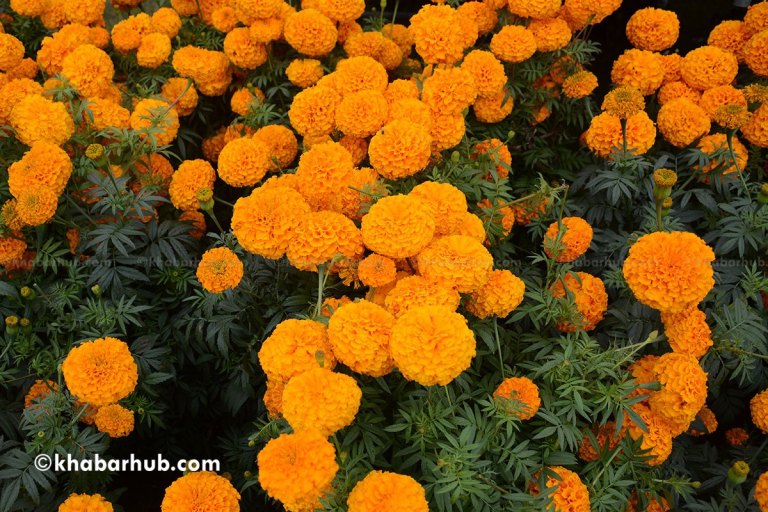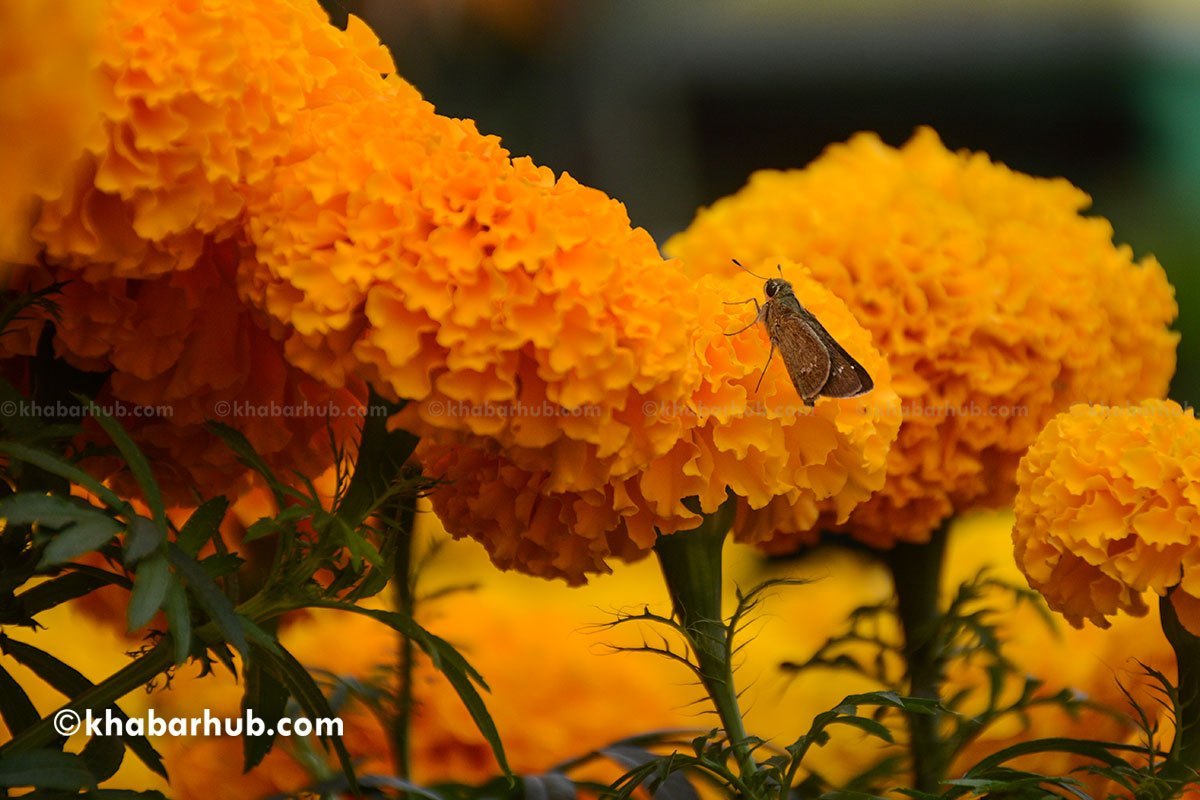KATHMANDU: Tihar, the festival of lights, flowers and sweets, a festival reflecting the love between sisters and brothers, is looked upon optimistically by the horticulturists as an occasion to get the market especially for their marigold, velvet and chrysanthemum popularly known as the Godavari.
Every Tihar consumes 2.5 million flower garlands in the country.
Targeting Tihar, people plant marigold and velvet in their courtyards and the open spaces and when the festival comes the surrounding is full of beautiful flowers enticing the visitors to look at them.
Kathmandu valley welcomes flowers from neighboring districts Nuwakot, Sindhupalchowk, Kavrepalanchowk and Dhading to name a few.
Although many people are working as horticulturists and promoting the horticulture profession, the production is still not enough to meet the demand for occasions like Tihar. The country mostly depends on flowers imported from India.
However, citing the demand for flowers might be less due to the pandemic spread all over the country, Horticulture Association Nepal(FAN) hopes the domestic production will suffice for this Tihar.
“Owing to the panic created by the coronavirus pandemic, the demand of flowers will be less this year,” Kumar Kasaju Shrestha, the President of FAN told Khabarhub, “There is the demand for only 1.2 million marigolds and 300 thousand velvet and chrysanthemum garlands this year.”
He informed Khabarhub that the country’s production will suffice to address the demand. “There is enough production to meet the demand for 1.5 million flowers so we need not import the flowers from outside this year,” Shrestha added.
Yet, horticulturists go skeptical recalling previous trends. In past years, also, they complained that the imported garlands that would appear a few days before Tihar capture the market preventing the domestic product from accessing the market.
“Imported garlands are relatively cheaper and are likely to create a threat to domestic product. To address it, we have said that a farmer should get Rs 30-40 per garland and the customer should get it at Rs 60-70 depending on the quality of the garland,” President Shrestha shared the association’s plan to address the issue.

When will Nepal be self-dependent in flowers?
Even though Nepal has wider agro-climatic zones and gorgeous landscape and has the high potentiality of a wide range of horticulture crops’ production such as fruit crops, vegetable crops, ornamental crops, medicinal and aromatic crops, spices and plantation crops and their value addition interventions, the horticulture does not have a long history. It started in 1954 and had a slow growth till the 1990s.
Lately, the number of horticulture entrepreneurs has also increased in the country leading the country towards self-dependence in flowers. The flowers produced at the local level meet the demand of the local sectors on normal occasions.
Horticulture has occupied more than 157 hectares of land in 43 districts in the country. According to President Shrestha, there are more than 7000 entrepreneurs in this business.
More than 44,000 people have got employment in this sector. With the increasing awareness about the importance of flowers, the import has increased as well.
According to Shrestha, not flowering in the season, the overproduction of the local species often make import of the flowers from outside a compulsion for the florists.
He complains that despite good production, the continuation of the import has made people feel the country is not self-dependent yet.
Late arrival of Tihar turned challenging to the horticulturists
Generally, the florists take into account the time the festival of flowers falls. They target Tihar and sow the seeds, grow the seedlings and tame the plants accordingly.
Yet, the season matters. “However hard one tries, if the environment does not become suitable, the plants won’t bear flowers properly,” Bishnu Chaudhary, a horticulturist in Kohalpur spoke about their dependency on nature.
Chaudhary who has joined this field since last year has grown marigold in a 3,380 square meter area. Although the outsiders are impressed at the flowering marigolds in her field, she complains the production is less this year.
“As Tihar has been late this time, the production is not as good as last year,” she said while speaking to Khabarhub, “the flowers need a conducive environment and season for their growth.”
“The marigold flower in 45 days in summer whereas it needs 60 days in winter,” Bishnu shared her experience.
“I planted them in the second week of September, the rainfall affected as well,” she told Khabarhub, “it taught me that once the season is over despite the care the production does not come as expected.”
She is delighted to see the flowers blooming in the field.
“I will start picking up the flowers and preparing the garlands and will send them to the flowers,” she said elatedly.









Comment